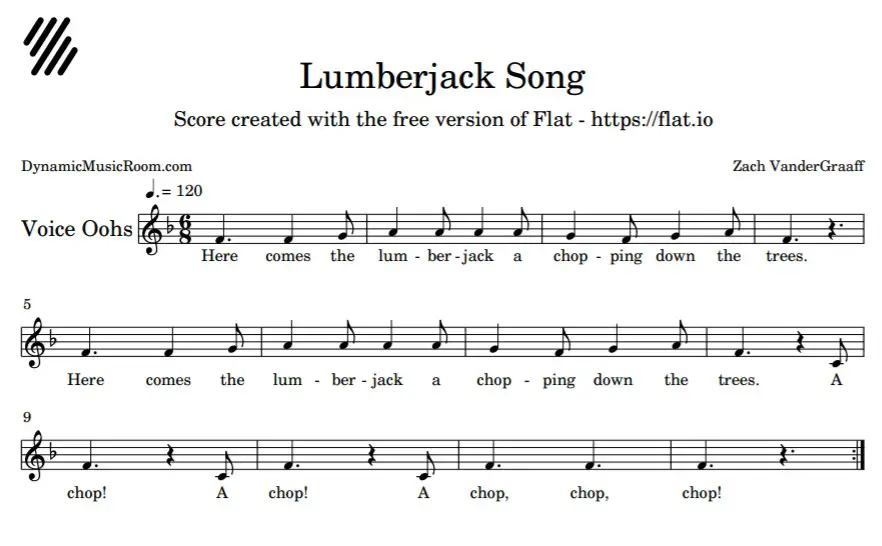Every once in a while, I do an activity with my kids I haven’t done since last year (or longer), and I remember how much I love.
Such is the case with what I call the “Tree Cycle.” This activity is packed with different songs, movements, and cross-curricular connections you may want to use in your classroom.
In this post, I’ll go over the Tree Cycle and why you may want to use it in your own classroom.
Table of Contents
What Grade Is This Activity For?
I use the Tree Cycle with my Kindergarten students a lot. I typically use it right after winter break.
Then, it comes back in the beginning of First grade as a way to dig up the knowledge they built from their previous year. Both groups love it!
I’ve even had second graders ask to play it again!
What Concepts Does This Activity Teach?
If you’re like me, then you love activities you can adapt and extend to teach many concepts. The Tree Cycle is a perfect example of this.
You may find it easier to read the activity breakdown first before the concept descriptions will make complete sense.
Head voice – The Lumberjack song and Mr. Sun are great songs for using with kids. The words are simple and fun, and if the song is pitched high enough, you can work on singing in head voice.
Expressive movement – At the beginning of the activity, students make the shape of trees and will fall down as trees. Discussing how their bodies should move in this way will increase their body awareness.
The seed growing portion of the activity is another part of the cycle where expressive movement wins out.
Timbre – During the rainstorm part of the activity, students are creating different rain-like sounds with their bodies. A little discussion and student-led creativity will provide excellent reinforcement into the different types of sounds.
Form – The song, Mr. Sun, is a good example of ABA form. Bring this song back later and use it in form activities.
High/Low – During the seed growing part of the activity, students are moving up and down matching the recorder (or other instrument) playing high and low.
Fast/Slow – During the seed growing part of the Tree Cycle, extend students’ learning by changing the tempo of your high/low playing and asking students to respond with their bodies.
Cross-curricular science – The connecting story of the Tree Cycle is somewhat science-related in how trees are cut down, seed replanted and grown, and how plants grow.
I don’t place heavy emphasis on this, but admin do love it.
Activity Breakdown
In this section, I’ll break down this activity into its different portions and include links and notation for the different songs where appropriate.
The Tree Cycle, as I call it, is a collection of 4 smaller music activities I connected with a simple story for kids to heighten engagement and provide something different for my students.
Note: For ease of reading, when I type something in italics, it’s what I’m actually saying to students.
Note 2: I typically improvise-sing everything I say during this activity. You’ll see the students’ engagement jump if you do this.
#1 Lumberjack Song
Students start standing up tall either spread around the room or in a circle. They should be trying to emulate trees.
Oh my, look at all these trees. I love trees.
They provide shade from the heat, oxygen for breathing, food and shelter for animals…
And we use them also for house and campfires.
But one type of person who just loves trees…is the lumberjack.
I usually hold my alto recorder over my shoulder as I trudge around with a clearly-fake angry look on my face.
I sing this song and “chop” down students during the chopping part of the song. Students must fall as much like a tree as they can.
Repeat the song until all students have been chopped down.
Note: The first time we play this activity, I promise students I won’t actually chop them down.
My chopping motions clearly indicate which student has been chopped, but there is no aggression in the motion and I don’t come anywhere near to touching them.

#2 Growing Seeds
This portion of the activity is just a transition to the next music part of the activity.
Once all the students are down laying on the ground, I sing-speak this next part.
Now all the trees sit criss-cross or on their knees.
They all look up at me,
And copy-whisper angrily…
Students echo you through each phrase.
Hey you!
You chopped us down!
We’ll chop you down!
Students stay seated and pretend to chop you down. I make a goofy and dramatic fall either to floor with the students (although not as much any more) or into a chair by them.
Note: You don’t have to do this first part if you don’t want to. It’s possible to just start here.
Now all the trees look as sad as can be.
They’re very very sad because they’re very lonely.
So they take a little seed,
And dig a little hole.
They plant it in the soil, and they cover it up.
Annnnnnnd wait.
At this point, many students without ever having played this activity will raise their hand and volunteer what else we need to get the seed to grow.
If they don’t, just ask for one thing we need. Depending on their answer of water or sun, jump either to #3 or #4, then catch the other after that.
#3 Water/ Rainstorm Timbre
I learned this body percussion timbre activity over 10 years ago at an Orff workshop. It’s simple and doesn’t go very far all on its own, but when you combine it with stories such as this one, it’s fun!
For this part of the cycle, you’re creating a rainstorm with your body percussion. I may start with a simple:
I hear a rainstorm coming. Move your hands like me and watch closely.
Then, I do the following moves slowly and gradually enjoying the changes in timbre.
- Hands up above your air snapping while you also cluck your tongue.
- Hands clapping in front of you.
- Pat your laps.
- Stomp/step your feet.
- Pat your laps.
- Hands clapping in front of you.
- Hands up above your head snapping while you cluck your tongue.
- Say “shh” while moving your hands down to the floor and then sitting still.
Pro-tip: At some point, you may want to bring this specific activity out to use as a discussion point for timbre. Students could also create different types of sound themselves.
#4 Oh Mr. Sun!
When a student picks the sun as something seeds need to grow, you do this fun song.
Oh Mr. Sun, or Mr. Golden Sun, is a song you may already teach or have heard before from somewhere else.
I usually perform it as I learned it as a kid. I first heard it from this Raffi version (see video).
To help keep students engaged and learn the words, I use the following motions with the words.
| Lyrics | Motions |
| Oh Mr. Sun, Sun, Mr. Golden Sun | Hands over head making sun shape swaying from side to side |
| Won’t you please shine down on me? | Touch both hands slowly to your heart |
| Oh Mr. Sun, Sun, Mr. Golden Sun | Hands over head making sun shape swaying from side to side |
| Hiding behind the trees | Hands cover face and peek out from behind them |
| These little children are asking you | Shake one finger at the sun |
| To please come out so we can play with you | Make “come here” motion with hands |
| Oh Mr. Sun, Sun, Mr. Golden Sun | Hands over head making sun shape swaying from side to side |
| Won’t you please shine down on me? | Touch both hands slowly to your heart |
#5 Seed Growing Music And Movement
Curl up seeds; it’s time to grow.
Listen for the recorder to blow,
And when the recorder plays from low to high
Grow and reach up to the sky.
I usually play my alto recorder, but it’s easy to do this with any other pitched instrument.
I play my alto from the lowest pitch (F for alto) and then go up slowly in pentatonic as high as possible while still sounding good.
Students should have slowly grown up into trees. If necessary, point out a few student models who moved expressively and slowly.
But this recorder is magic, don’t you know?
And when the recorder plays from high to low
Reverse and shrink down, real slow.
Play from the highest note down to the bottom. Go up and down changing the tempo at which you play.
Challenge the students by only going up halfway and then back down (and vice versa).
#6 Ending Or Repeat
Now, it’s up to you what happens next.
For those who want to repeat the cycle, end with students grown up into trees. Then, bring the lumberjack song back.
When it’s time to end, have students shrink back down. Then, I say:
Well, you can give a seed all it needs, but sometimes all you need is just time.
Then, I ask them to sit up, and we transition to the next part of the overall lesson.
Conclusion
I hope you enjoyed this Tree Cycle activity and use it in your classroom someday. I’ve used it for years now, and my kids love it every time.
Any questions on this activity? Ask away in the comments below.


